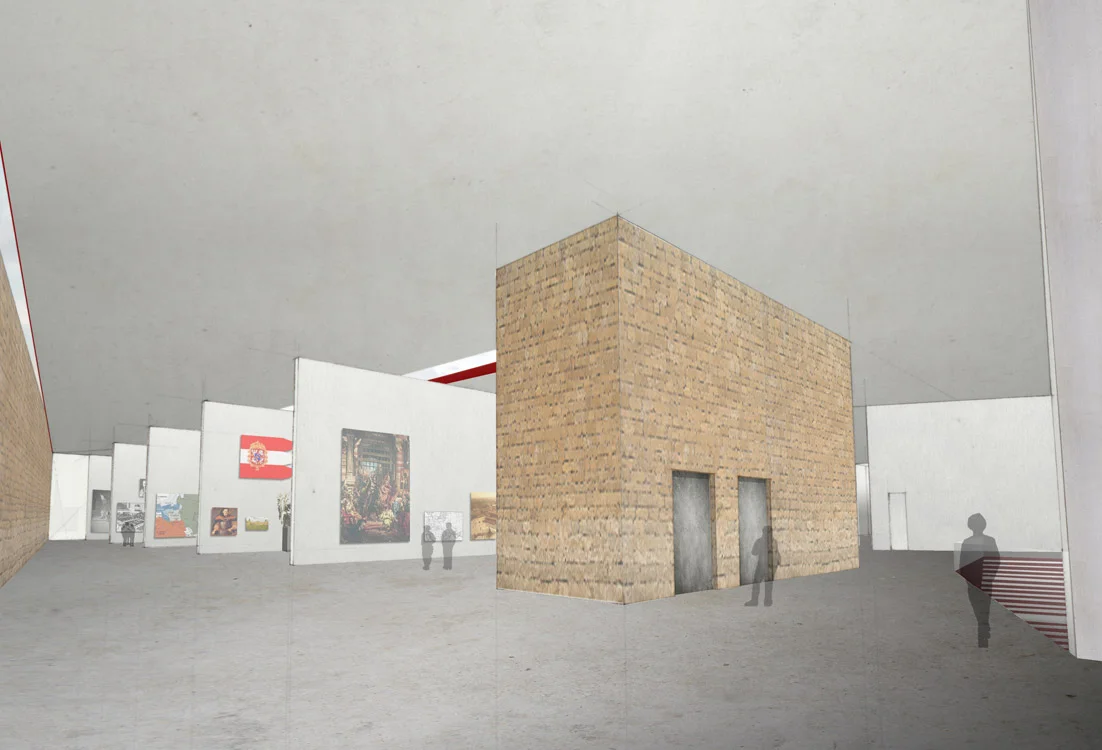








Your Custom Text Here
MUSEUM OF POLISH HISTORY
WARSAW, POLAND
COMPETITION, 2009
Reviving the connection between Skarpa Wislana and the streets of Warsaw, the new Museum of Polish History bridges the historical components and axes of the Royal Route.
The new Museum grounds itself in a modern aesthetic, placing new foundations adjacent to the neighboring stones upon which its history is presented. Exposing tiers of economical, political, and cultural strata, the new Museum of Polish History looks ahead with new generations of Polish citizens while grounding itself in the strength of its physical and cultural history.
The new Museum sits half-buried in the site while its roof, volumes and landscape bridge the skarpa. By uniting the landscape that is currently interrupted by the Trasa Lazienkowska, the building allows its visitors to experience its architecture from within and without.
Main entrances of the museum are approached from the North, East, and West. The Eastern approach is from below the Royal Castle, Zamek Ujazdowski. At the lower plaza level, visitors enter via a modern concrete triangular tunnel with apertures pointing upwards to the castle above. This approach brings its visitors through a long dark space into the lower open forum which joins the other entrances.
The approach from the west is a gradual descent from above to the main reception entrance of the upper forum. The receiving volume, with its vertical shifts addressing the various entrances, becomes the newly defined focus of the new axes. This Western approach is slightly off-axis of the Royal Castle, thus strengthening the original Trakt Krolewski.
The Museum entry from the North across the trasa is from existing park paths. This path is anchored by the gateway of the museum’s Education wing and is braced by the heavy stone wall which establishes a strong edge between the skarpa and Trasa Lazienkowska. This edge accentuates the topographic fortification of the embankment utilized in Warsaw’s previous centuries. The stone wall, made from stacked layers of varying stones alludes to the strata of the ground plane held behind this retained edge. As visitors walk the exterior path along the wall and approach the museum, the path enters the building; the visitor is slipped into the building. The wall becomes the moment of within, taking visitors past the shops and public services to the main forum reception while subtly exposing the layers of different stones that have built Warsaw’s place in history.
MUSEUM OF POLISH HISTORY
WARSAW, POLAND
COMPETITION, 2009
Reviving the connection between Skarpa Wislana and the streets of Warsaw, the new Museum of Polish History bridges the historical components and axes of the Royal Route.
The new Museum grounds itself in a modern aesthetic, placing new foundations adjacent to the neighboring stones upon which its history is presented. Exposing tiers of economical, political, and cultural strata, the new Museum of Polish History looks ahead with new generations of Polish citizens while grounding itself in the strength of its physical and cultural history.
The new Museum sits half-buried in the site while its roof, volumes and landscape bridge the skarpa. By uniting the landscape that is currently interrupted by the Trasa Lazienkowska, the building allows its visitors to experience its architecture from within and without.
Main entrances of the museum are approached from the North, East, and West. The Eastern approach is from below the Royal Castle, Zamek Ujazdowski. At the lower plaza level, visitors enter via a modern concrete triangular tunnel with apertures pointing upwards to the castle above. This approach brings its visitors through a long dark space into the lower open forum which joins the other entrances.
The approach from the west is a gradual descent from above to the main reception entrance of the upper forum. The receiving volume, with its vertical shifts addressing the various entrances, becomes the newly defined focus of the new axes. This Western approach is slightly off-axis of the Royal Castle, thus strengthening the original Trakt Krolewski.
The Museum entry from the North across the trasa is from existing park paths. This path is anchored by the gateway of the museum’s Education wing and is braced by the heavy stone wall which establishes a strong edge between the skarpa and Trasa Lazienkowska. This edge accentuates the topographic fortification of the embankment utilized in Warsaw’s previous centuries. The stone wall, made from stacked layers of varying stones alludes to the strata of the ground plane held behind this retained edge. As visitors walk the exterior path along the wall and approach the museum, the path enters the building; the visitor is slipped into the building. The wall becomes the moment of within, taking visitors past the shops and public services to the main forum reception while subtly exposing the layers of different stones that have built Warsaw’s place in history.